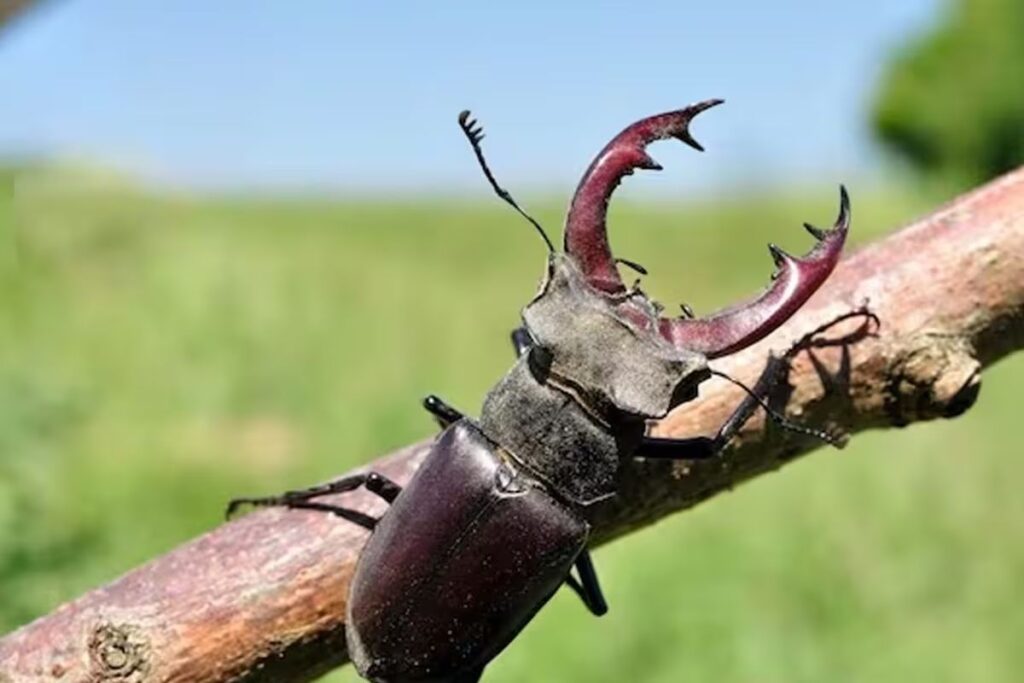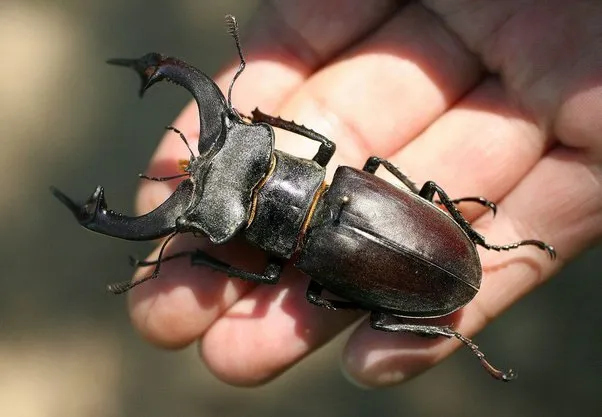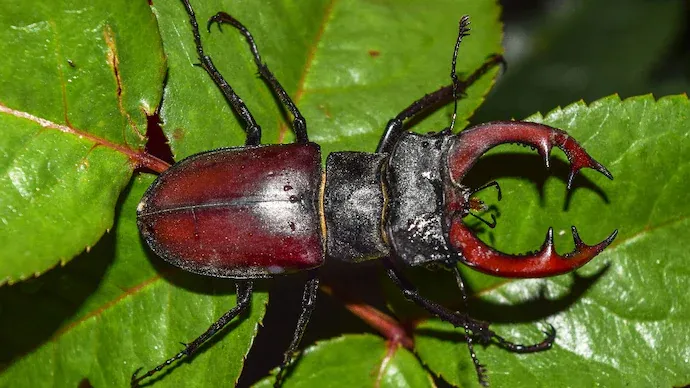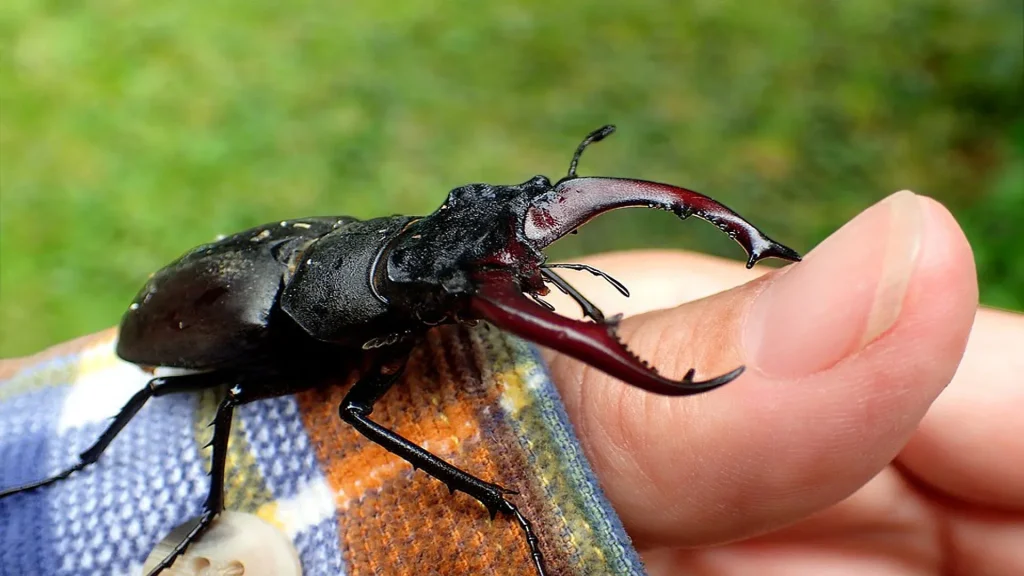A single stag beetle can fetch up to Rs. 75 lakh, making it one of the world’s most expensive insects. Its rarity and symbolic significance contribute to its high market value, with many believing that owning one can bring sudden wealth and good luck.

Stag beetles are renowned for their large mandibles and male polymorphism. A study published in the Scientific Data journal describes these insects as an essential part of the “significant saproxylic assemblage in forest ecosystems.” The males’ mandibles, resembling a stag’s antlers, are used to compete for mating opportunities during the breeding season.

These beetles thrive in warm, tropical climates and are sensitive to cold temperatures. Naturally inhabiting woodlands, they can also be found in urban areas such as parks and gardens where dead wood is plentiful. Hedgerows and traditional orchards also provide ideal conditions for their survival and reproduction.
Adult stag beetles primarily feed on sweet liquids like tree sap and juice from rotting fruit. They rely on the energy reserves stored during their larval stage, which sustain them throughout adulthood. Their larvae consume dead wood, using their sharp jaws to scrape and extract splinters from fibrous surfaces. As they only eat dead wood, they pose no threat to living trees or shrubs, making them harmless to healthy vegetation.

According to the Natural History Museum in London, stag beetles weigh between 2 and 6 grams and have a lifespan of 3 to 7 years. Males measure 35–75 mm in length, while females range from 30–50 mm. Their size and longevity contribute to their uniqueness and rarity.

In addition to their ecological role, stag beetles are used in medicinal practices, although specific applications are not widely documented. This medicinal use adds another layer to their value and intrigue.
